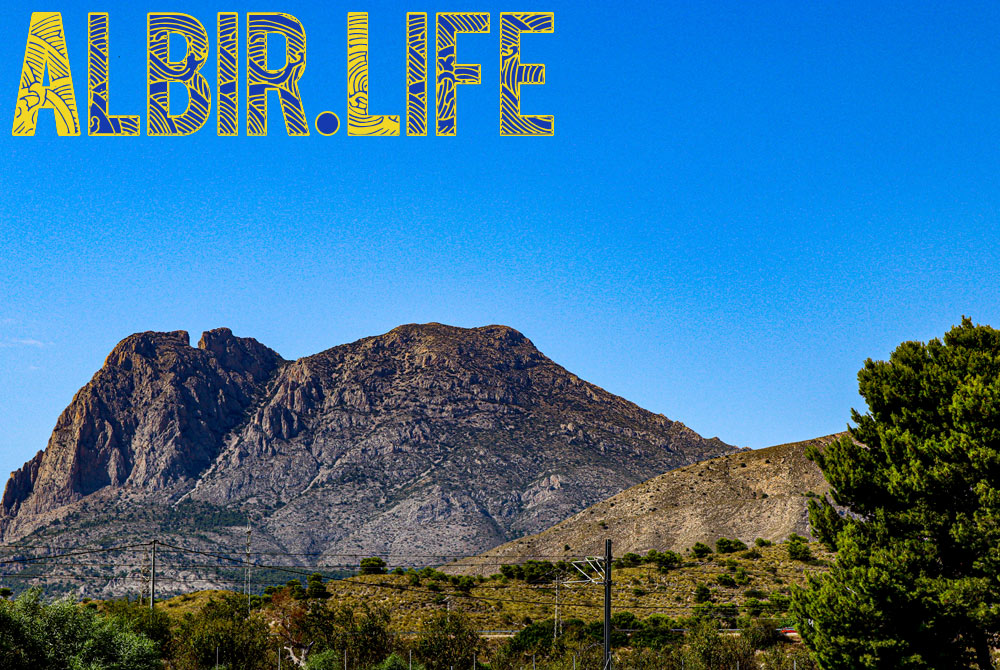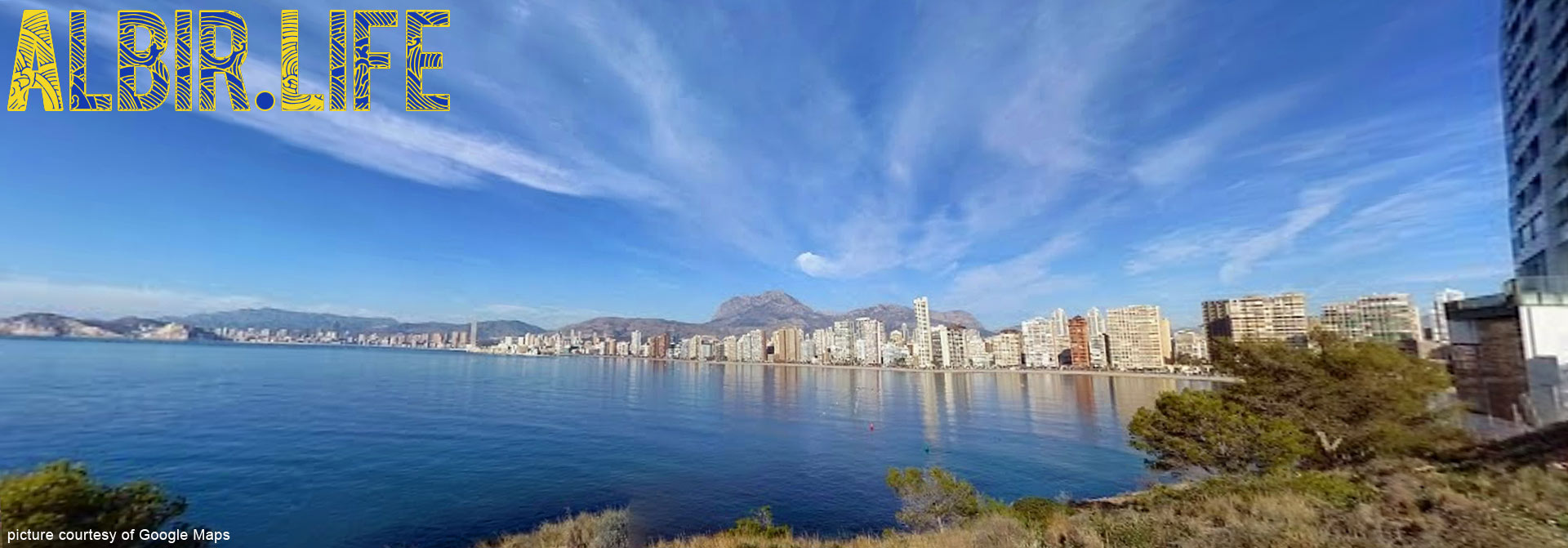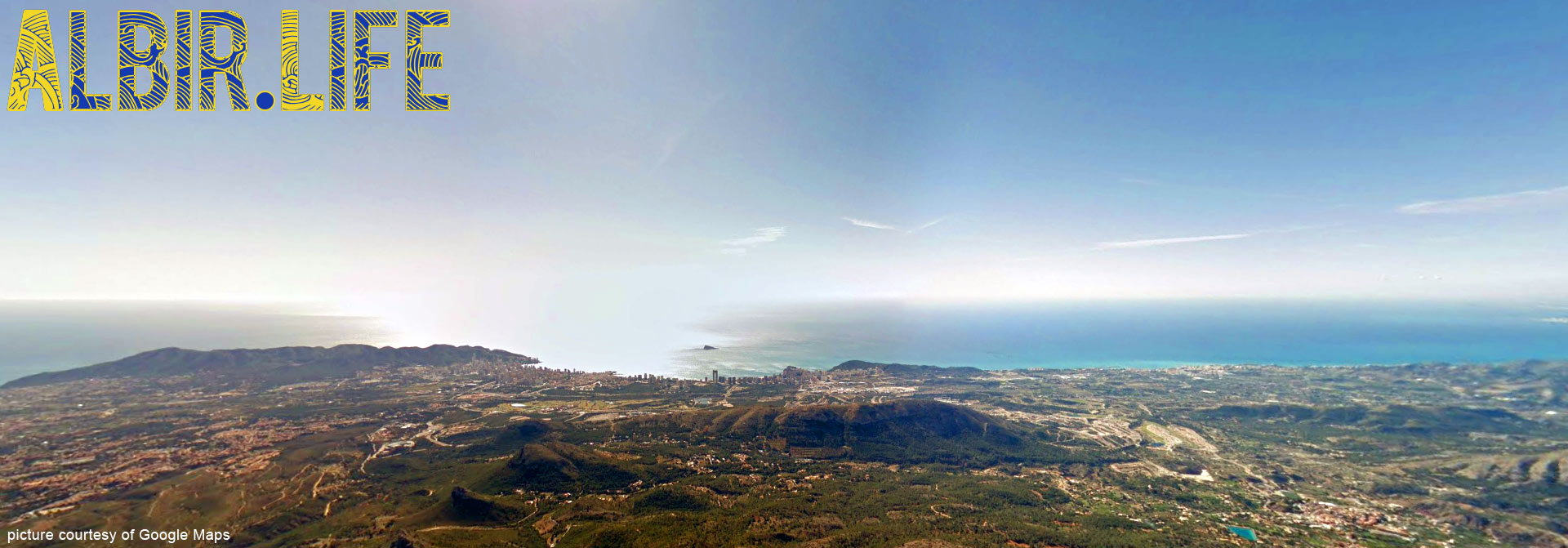PUIG CAMPANA

Albir lies in the shadow of a very well-known landmark. Rising above Benidorm are the famous peaks of the Puig Campana mountain. The sight of the mountain above Benidorm is mostly known for its “notch”, which has given birth to several legend stories.

Walking and Climbing
The Puig Campana has two peaks. The left (west peak) contains the notch, the right (east peak) contains the highest point). Did you know that the summit is the second highest peak in the Alicante region. But it is way down the list of mountains in Valencian region and the whole of Spain. But with the summit standing at 1,406 metres above sea level it is higher than any mountain in the UK (Ben Nevis at 1,345 metres).
Walking and climbing the Puig Campana is extremely popular and there are many trails and hiking treks that you can follow. The walk is quite challenging, but the views are spectacular. It takes several hours to reach the top. There are many guided tours and trekking/climbing clubs that make regular trips.

The Legend
Puig Campana in English means Bell Peak. It is not known why it has this name. The legend of the “notch”, or El Portell (the gate) as it is known in Spanish, stems from the legendary figure of Roland. Rolans was an 8th century military leader under Charlemagne (King Charles I, or Charles the Great) King of the Franks. It is said that Roland became involved in a heavy sword fight with the head of a Moorish army. They fought for hours and eventually ended atop the mountain. With the Moorish leader on the floor Roland just needed one last blow to finish him off. But he swung his sword and missed his foe. The mighty force of the sword swing dug into the rock and caused a huge chunk to fall down the mountain and into the sea, forming Benidorm island (L’illa de Benidorm).
The Spanish also call this notch in the rock the Brecha de Roldán or Tajo de Roldán. This comes from the French “La Brèche de Roland” and a very similar tale from the same time period and a rock notch in the Pyrenees on the Spanish-French border.


